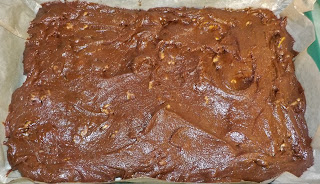“Baking, because murder is bad” is a meme I recently spotted, and shared, on Facebook. Yes, murder is bad, no matter the excuse, grievance or mentally dysfunctional desire. However, I read more into this quote than that. I believe it says, “Practice patience first.”
Personally, I have been doing more baking, and I am learning to practice more patience. Baking is not like cooking where you can measure with hands and eyes; it needs preciseness. You have to measure each item, sift dry ingredients to a fineness, mix thoroughly so each ingredient melds completely with the others. It takes time, and during this time, the baker can relax, focus on clarity and breathe, all at the same time. When it comes to anger, instead of reacting immediately, should one not take the time to relax, focus on clarity and breathe?
So, with my patience building, and learning about sustainability, my next venture is with zucchini. I learned something new while researching information on zucchini, and one should learn something new daily. Ever watch shows from the UK, or even read novels, and “marrow” or “vegetable marrow” is mentioned? What marrow is referring to is zucchini or summer squash! I was not sure, as with fancy recipes, on cooking shows, often refer to bone marrow as a delicacy, and I am happy to have that cleared up.
Zucchini, and I just
planted several plants, and yellow squash as well, can be a prolific
vegetable. In approximately 45 to 50
days, the blossoms will begin to show, and be replaced with pinkie sized
veggies. They can be picked as soon as
they reach an average length of six inches, but some varieties can be mammoth
in length and girth. The blossoms can
often be picked early on, stuffed with a cream cheese mixture, batter dipped
and deep fried. Zucchini plants will
continue to produce until blooms no longer develop, or first frost.
The skin of zucchini can be eaten as it is soft and pliable, the meat inside is firm, yet very moist. When it comes to baking, be careful with recipes asking to add water, it could make your batter too, too goopy to bake up correctly. When shredding fresh zucchini, you cannot help but see the water (or is it juice?) at the bottom of the bowl, so adding more liquid might mess up the recipe.
Nutrition wise, zucchini is rich in multiple antioxidants, including lutein and zeaxanthin; plus, low in calories, fat, and sugar.
Nutrients per Serving:
Calories: 62.
Protein: 2 grams.
Fat: Less than 1 gram.
Carbohydrates: 14 grams.
Fiber: 8 grams.
Sugar: 7 grams.
Once again, be careful when adding sugar to a baking recipe that uses zucchini. I have seen anywhere from one cup to three cups of sugar, and still only using three cups of shredded zucchini. Surprisingly, even with zucchini low in sugar itself, when adding sugar, less is more.
An average zucchini will yield about 1 to 1 and ¼ cups of shredded, and I always purchase more than needed, and freeze the excess for future baking. Flatten the freezer bag as much as possible to release air, and help stop ice crystals from taking over, and do not forget to date and label as well.
Let me tell you, having an extra-large bowl sitting in your lap, shredding zucchini on an old-fashioned grater, while watching a favorite rerun, certainly induces relaxation, focus and breathing. …and now to the baking! If you happen to have tried the lemon zucchini cookies that are, for sale, at Bluff Fort (Bluff, UT), or Jacob Lake Inn (on the way to Grand Canyon – North Rim, AZ), then this zucchini bread and lemon glaze will remind you of those.
Zucchini Bread
Ingredients:
3 cups shredded zucchini (shred with skin on)
2 cups sugar
2/3 cup vegetable oil
2 teaspoons vanilla
4 eggs
3 and ¼ cups all-purpose flour (add 3 Tbsp. for high altitude)
2 tsps. baking soda
1 tsp. salt
1 tsp. ground cinnamon
1 tsp. ground nutmeg
1/2 tsp. ground cloves
1/2 tsp. baking powder
Add-ins: 2/3 cup coarsely chopped walnuts or pecans, chocolate chips, raisins or crasins.
Preparation:
Set oven rack to center of oven, preheat to 350F; spray 2-9x5 loaf pans with baking spray.
In large bowl, stir zucchini, sugar, oil, vanilla and eggs until well mixed. In a 2nd large bowl, sift together all dry ingredients, except any add-ins. Add dry ingredients to wet and mix thoroughly; mixture will be very wet.
Cool completely, about 2 hours, before slicing. While the bread is cooling, make the lemon glaze. Drizzle the glaze over the loaves. Slice and serve.
Wrap tightly in plastic wrap and store at room temperature up to 4 days, refrigerate up to 10 days, or freeze up to 3 months without glaze (add glaze after bread has thawed).
Makes 2 loaves.
Muffins: Grease the bottoms only of 24 regular-size muffin cups, or use paper liners. Fill cups about 3/4 full. Bake for 20 to 25 minutes or until the tops spring back when lightly touched.
Lemon Glaze
Ingredients:
2 cups powdered sugar
3 Tbsp. fresh lemon juice
Preparation:
In a small bowl, combine powdered sugar and lemon juice. Whisk until smooth.
Baking, because learning patience is a good thing.
Mary Cokenour
























